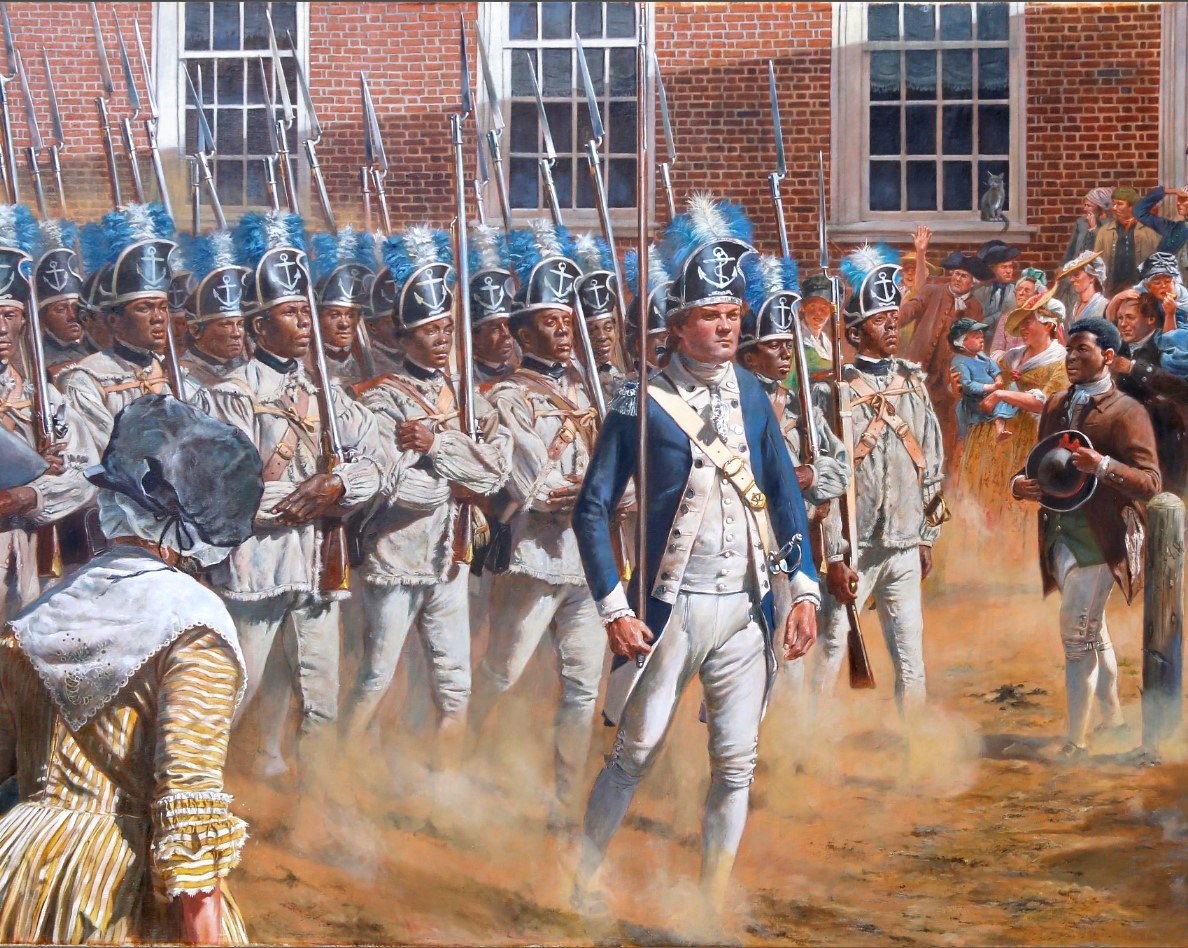Part of a series of articles titled 2024 Preservation Planning Grants Highlights.
Article
Life, Liberty, and the Moral Dilemma of Slavery: Uncovering the History of Rhode Island’s Black Soldiers during the American Revolution

NPS and the Museum of the American Revolution
Recipient: Newport Historical Society
Amount: $91,260.00
As the Continental Congress declared that “all men are created equal” and that they possessed the unalienable rights of “Life, Liberty, and the pursuit of Happiness” in the summer of 1776, over 400,000 Black Americans lived in slavery - a contradiction that was not only isolated to the southern states. At the outset of the American Revolution, over 5% of Rhode Island’s population were enslaved.
Early abolitionists like Thomas Paine argued against slavery as an affront to religious values and a sin of the old-world aristocracy, but many state legislatures were unresponsive to the issue until wartime necessities made it unavoidable. In the Winter of 1778, Rhode Island’s inability to fill muster quotas for the Continental Army led the state’s Governor and General Assembly to pass the Slave Enlistment Act. This legislation guaranteed any slave that enlisted would be “immediately discharged from the service of his master or mistress, and be absolutely free, as though he had never been encumbered without any kind of servitude or slavery.” Regrettably, the act also paid a bounty to the enlisted man’s enslaver for the “loss of their service.”
Despite its flaws, the Slave Enlistment Act provided a pathway to self-determination that many Black men used to obtain their freedom. By the fall of 1778, over 60% of the 1st Rhode Island Regiment would be made up of free and formerly enslaved Black men. Most would serve for the duration of the war, taking part in the Siege of Yorktown and the successful American assaults on redoubts number 9 and 10, leading to the surrender of the British Army of Lord Cornwallis on October 19, 1781.
Using the financial support of a Preservation Planning Grant, the non-profit Newport Historical Society will develop an interpretation plan for the historic Wanton-Lyman-Hazard House, and determine how to adapt the building into a history center for recounting the stories of Black Americans in Rhode Island during the American Revolution. Stories like the life and experiences of Cardardo Wanton, an enslaved laborer that worked and lived in the house, secured his freedom, and then chose to join the Continental Army in 1775. Acts like these make Wanton a remarkable example of the hundreds of free and formerly enslaved Black men from Rhode Island who would fight for the American cause during the war.
Preservation Planning Grants from the National Park Service’s American Battlefield Protection Program support a variety of projects that are focused on the preservation and interpretation of sites of armed conflict, including battlefields and associated sites on American soil. In addition to this grant opportunity, the program also provides financial assistance through Battlefield Land Acquisition Grants, Battlefield Interpretation Grants, and Battlefield Restoration Grants, to help generate community-driven stewardship of historic resources at the state, tribal and local levels.
Last updated: August 1, 2024
